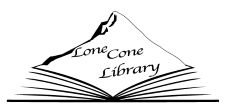The bell curve / intelligence and class structure in American life
(Book)
Author
Contributors
Published
New York : Free Press, ©1994., New York : Free Press, [1994].
Physical Desc
xxvi, 845 pages : illustrations ; 23 cm.
Status
Description
Loading Description...
Also in this Series
Checking series information...
Copies
| Location | Call Number | Status |
|---|---|---|
| Silverton Public Library - NONFICTION | 305.9 HER | On Shelf |
More Copies In Prospector
Loading Prospector Copies...
More Details
Published
New York : Free Press, ©1994., New York : Free Press, [1994].
Format
Book
Language
English
UPC
ZBWT00577291
Notes
Bibliography
Includes bibliographical references (p. 775-832) and index.
Description
"In our time, the ability to use and manipulate information has become the single most important element of success, no matter how you measure it: financial security, power or status. Those who work by manipulating ideas and abstractions are the leaders and beneficiaries of our society. In such an era, high intelligence is an increasingly precious raw material for success. But despite decades of fashionable denial, the overriding and insistent truth about intellectual ability is that it is endowed unequally, for reasons that government policies can do little to change. The major purpose of The Bell Curve is to reveal the dramatic transformation that is currently in process in American society -- a process that has created a new kind of class structure led by a 'cognitive elite,' itself a result of concentration and self-selection in those social pools well endowed with cognitive abilities. This transformation, sadly, has its opposite: the perpetuation of a class of people deficient in these endowments and abilities, and increasingly doomed to labor, if they find work at all, outside the information economy. In a book that is certain to ignite an explosive controversy, Herrnstein and Murray break new ground in exploring the ways that low intelligence, independent of social, economic, or ethnic background lies at the root of many of our social problems. The authors also demonstrate the truth of another taboo fact: that intelligence levels differ among ethnic groups. This finding is already well-known and widely discussed among psychometricians and other scholars. In The Bell Curve, Herrnstein and Murray open this body of scholarship to the general public. Our public policy refuses to acknowledge the proofs of human difference, or to deal with its consequences. With relentless and unassailable thoroughness, Herrnstein and Murray for the first time show that for a wide range of intractable social problems, the decisive correlation is between a high incidence of the problem and the low intelligence of those who suffer from it: this holds for school dropouts, unemployment, work-related injury, out of wedlock births, crime, and many other social problems. Though we stubbornly deny it, these social problems correlate to a significant degree with intelligence. Only by facing up to this undeniable news can we begin to accurately assess the nation's problems and make realistic plans for addressing them. That means in the first instance accepting that there are great differences in intelligence between groups of people, as well as among individuals in any group. Just as important, it also means learning that group differences do not justify prejudicial assumptions about any member of a given group whose intelligence and potential may, in fact, be anywhere under the bell curve of intelligence from the dullest to the most brilliant. But it does mean that we must have the courage to revise what we can talk about in public. This book is the first important step toward that difficult but necessary goal."--From the dust-jacket flaps.
Reviews from GoodReads
Loading GoodReads Reviews.
Citations
APA Citation, 7th Edition (style guide)
Herrnstein, R. J., & Murray, C. A. (1994). The bell curve: intelligence and class structure in American life . Free Press.
Chicago / Turabian - Author Date Citation, 17th Edition (style guide)Herrnstein, Richard J and Charles A. Murray. 1994. The Bell Curve: Intelligence and Class Structure in American Life. Free Press.
Chicago / Turabian - Humanities (Notes and Bibliography) Citation, 17th Edition (style guide)Herrnstein, Richard J and Charles A. Murray. The Bell Curve: Intelligence and Class Structure in American Life Free Press, 1994.
MLA Citation, 9th Edition (style guide)Herrnstein, Richard J., and Charles A Murray. The Bell Curve: Intelligence and Class Structure in American Life Free Press, 1994.
Note! Citations contain only title, author, edition, publisher, and year published. Citations should be used as a guideline and should be double checked for accuracy. Citation formats are based on standards as of August 2021.
Staff View
Loading Staff View.

.png)